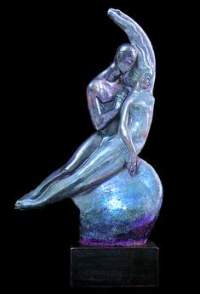Kelvin Smith Library
 Henry Adams
Henry Adams
College of Arts & Sciences
Department of Art History & Art
 The Beauty of Damage: The world of Christopher Pekoc by Henry Adams; Alenka Banco (Photographer); Rob Colgan (Photographer)
The Beauty of Damage: The world of Christopher Pekoc by Henry Adams; Alenka Banco (Photographer); Rob Colgan (Photographer) A buckeye abroad : Frank Wilcox in Paris and his European travels, 1910-1917 by Henry Adams
A buckeye abroad : Frank Wilcox in Paris and his European travels, 1910-1917 by Henry Adams Edris Eckhardt : visionary and innovator in American studio ceramics and glass by Henry Adams, Joseph Kisvardai
Edris Eckhardt : visionary and innovator in American studio ceramics and glass by Henry Adams, Joseph Kisvardai Victor Schreckengost: American Da Vinci by Henry Adams
Victor Schreckengost: American Da Vinci by Henry Adams The Wyeths : three generations of American art: Bank of America Merrill Lynch collection : under the high patronage of His Excellency Mr. Charles H. Rivkin, U.S. Ambassador to France by Ruth L. A. Stiff, Henry Adams
The Wyeths : three generations of American art: Bank of America Merrill Lynch collection : under the high patronage of His Excellency Mr. Charles H. Rivkin, U.S. Ambassador to France by Ruth L. A. Stiff, Henry Adams The Wyeths Across Texas by Henry Adams (Text by, Appendix by); Victoria Wyeth (Introduction by); Kentaro Tomio (Preface by, Associate Editor, Designed by); Linda Resnik (Associate Editor)
The Wyeths Across Texas by Henry Adams (Text by, Appendix by); Victoria Wyeth (Introduction by); Kentaro Tomio (Preface by, Associate Editor, Designed by); Linda Resnik (Associate Editor)